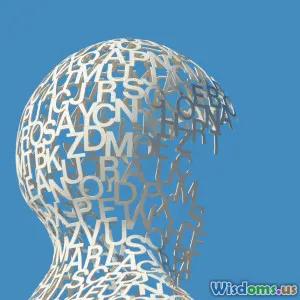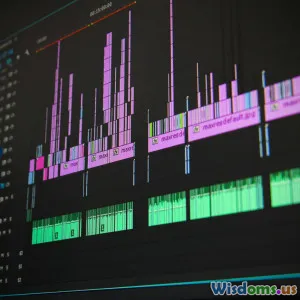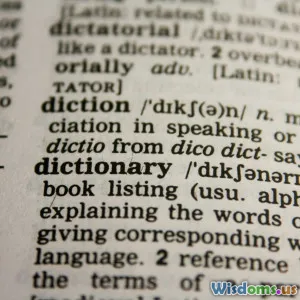
Can Machine Translation Replace Human Experts in 2024
10 min read An in-depth exploration of whether machine translation can surpass human expertise by 2024, analyzing current capabilities, limitations, and future prospects. (0 Reviews)
Can Machine Translation Replace Human Experts in 2024
The rapid advancement of artificial intelligence (AI) and machine learning has revolutionized the way we approach language translation. With the advent of sophisticated machine translation (MT) systems such as Google Translate, DeepL, and others, a natural question arises: Can these systems truly replace human experts by 2024? As we inch closer to this timeline, it’s vital to assess the current landscape, technological capabilities, limitations, and the complex nature of language that might resist complete automation.
Introduction
Language is the cornerstone of human interaction, culture, and commerce. Historically, translation was seen as a skill mastered by linguists and language experts. Today, automated translation systems are increasingly competent, especially with the advent of neural machine translation (NMT). However, the question is whether these innovations can fully supplant human translation experts by 2024. Understanding this requires examining the progress in MT technology, the types of translation tasks involved, and the nuanced challenges that human professionals tackle.

The Evolution of Machine Translation: From Rules to Neural Networks
Early Rule-Based and Statistical Machine Translation
The journey of MT began in the 1950s with rule-based systems that relied heavily on handcrafted linguistic rules. By the 1990s, statistical machine translation (SMT) emerged, using large amounts of bilingual text data to infer translation probabilities. Systems like IBM’s M4 and Google’s early models exemplified this era.
The Rise of Neural Machine Translation
Around 2016, neural machine translation (NMT) revolutionized the field. Unlike prior models, NMT employs deep learning neural networks to generate more fluent and context-aware translations. Google’s switch to NMT in 2016 substantially improved translation quality, making automated outputs increasingly coherent.
Current State in 2024
Today’s leading MT systems achieve impressive levels of accuracy for many language pairs, notably high-resource ones like English–French or English–German. DeepL, for instance, claims to produce translations that are often indistinguishable from human quality in specific contexts. However, challenges remain, especially with less-resourced languages, technical jargon, and complex sentence structures.

Capabilities of Machine Translation in 2024
Fluency and Contextual Understanding
Modern NMT systems excel at capturing context within sentences, producing translations that are grammatically correct and contextually relevant in many cases. For instance, translating news articles or technical manuals has become highly reliable.
Speed and Cost Efficiency
MT provides near-instant translation, enabling real-time multilingual communication, essential in fields like international customer support, live broadcasting, and e-commerce.
Customization and Domain Adaptation
Advanced MT models can be tailored to specific domains—medical, legal, technical—improving accuracy. Companies like SDL and Google Cloud offer specialized solutions to meet these needs.
Multilingual Support
Multi-language MT models are expanding, facilitating communication across dozens of languages simultaneously. The advent of multilingual models like Meta’s M2M-100 marks significant progress.

Limitations and Challenges of Machine Translation
Nuance and Cultural Context
Machine translations often struggle with idioms, humor, metaphors, and cultural specifics that require nuanced understanding. For example, translating humor or poetic language remains a significant hurdle.
Ambiguity and Multiple Interpretations
Languages are inherently ambiguous. For example, the phrase “bank” in English can mean a financial institution or the side of a river. Humans often resolve such ambiguities through context and cultural understanding, which machines often misinterpret.
Technical and Legal Complexities
Legal, medical, or technical texts demand high precision. Misinterpretation can lead to serious consequences, requiring expert oversight to ensure accuracy.
Interpretation of Non-verbal and Paralinguistic Cues
Humans often rely on tone, gestures, and facial expressions—elements beyond text—to convey meaning, which current MT systems cannot process.

The Role of Human Experts in the Age of Machine Translation
Critical Tasks Outside Automated Capabilities
Even with powerful MT systems, human experts are indispensable for reviewing, editing, and contextualizing translations—especially in legal, medical, diplomatic, and literary fields. Human oversight ensures cultural relevance, accuracy, and appropriateness.
Post- editing and Hybrid Models
Most industry practices now involve human post-editing of machine-generated content. This hybrid approach combines the speed of MT with human judgment, producing high-quality outputs faster and at a lower cost.
Ethical and Confidential Considerations
Sensitive material requires confidentiality and ethical judgment that current machine systems can’t guarantee. Human expertise is critical in such contexts.

What the Future Holds: Will Machines Fully Replace Humans by 2024?
Technological Advancements on the Horizon
Continued innovations in AI, including multimodal systems that incorporate visual, contextual, and linguistic data, will likely enhance machine understanding and output.
Limitations That May Persist
Despite advances, certain elements—deep cultural understanding, emotional intelligence, and contextual judgment—may remain beyond full automation.
Realistic Expectations
By 2024, it's unlikely that machine translation will entirely replace human experts across all fields. Instead, technology will serve as an augmentation, enabling professionals to work more efficiently while focusing on complex, nuanced areas.
Case Studies and Industry Trends
Organizations like the European Parliament and the UN increasingly rely on hybrid models, showcasing the future trajectory: automated base translation supplemented by human refinement.

Conclusion
While machine translation has achieved remarkable progress, it is unlikely to fully replace human experts by 2024. The technology excels in speed, consistency, and handling high-volume straightforward translations but still faces significant limitations where nuance, cultural context, and critical judgment are required.
The future of translation likely lies in a symbiotic relationship—advanced AI tools empower human professionals to deliver faster, more accurate, and culturally sensitive translations. As technology evolves, human expertise remains irreplaceable in ensuring quality, ethics, and deep contextual understanding.
For businesses, governments, and individuals, the key is embracing the strengths of both AI and human experts to achieve the most effective communication in an increasingly interconnected world.
References and Further Reading
- Google Translate Data & Research updates (2016-2023)
- DeepL’s Comparative Translation Studies
- Studies on Neural Machine Translation Effectiveness
- Industry reports from SDL, Lionbridge, and the EU
Final Thoughts
In sum, 2024 will see machine translation playing an ever-growing role—but human experts will continue to be essential for the foreseeable future. The blend of cutting-edge technology and human insight offers the best path toward truly effective and meaningful translation in our globalized era.

Rate the Post
User Reviews
Other posts in Artificial Intelligence
Popular Posts

















